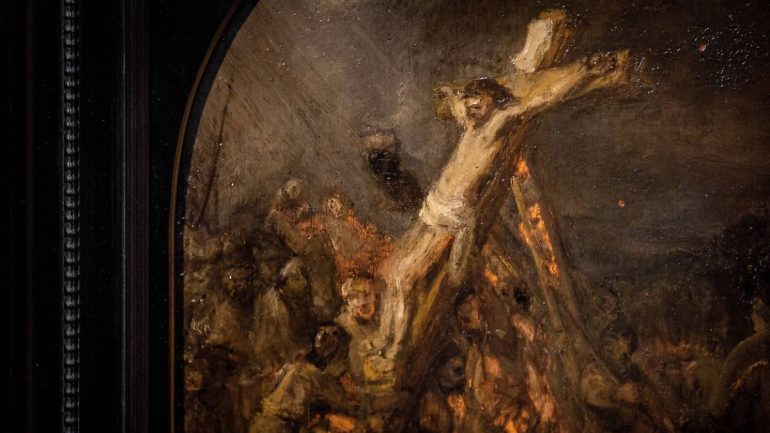Sensational discovery in The Hague
Rembrandt’s copy is believed to be the original
11/04/2022 2:04 pm
According to experts, an oil sketch declared as a clumsy Rembrandt copy is actually an original by the famous Dutch painter. This can be demonstrated using the latest technology. The artwork is also similar to a painting displayed in Munich.
For decades, the 17th-century oil sketch “Rising of the Cross” gathered dust in a corner of the Bredius Museum in The Hague because it was believed to be a copy of Rembrandt – now Dutch experts are convinced it is the original “master of the light”. “. They were able to prove this through investigations using the latest technology, among other things, which was also attended by the Rijksmuseum Amsterdam.
The oil sketch was purchased by the Dutch art historian, collector and curator Abraham Bredius in 1921. Then he was convinced that it was a real Rembrandt. Later, however, experts dismissed the image as a clumsy imitation of a student of the Baroque master. He pointed out that the rough brushstrokes were not in line with Rembrandt’s technique.
quality of details
Research by Johannke Verhaev and former chief curator for old paintings at the Rotterdam Museum Boijmans Van Beuningen, Jeroen Giltaij now comes to a different conclusion. “I kept looking at this work. The brushstrokes. They are brilliant,” Giltage, who had “rediscovered” the sketch while researching a book about Rembrandt, told AFP. And Verhew, who restored the picture and examined it together with Giltage, is convinced that it is a real Rembrandt, judging by the “quality of the details”.
Giltage admits that Rembrandt is usually painted in a certain “precise and polished” manner. But in this case, it has to be noted that it was a sketch in preparation for a painting, the expert said. Experts point to a similarity with Rembrandt’s “The Rising of the Cross” from 1633, on display at the Alte Pinakothek in Munich. The sketch’s confidently set “broad brushstrokes” would have convinced him “that Bredius is right”.
Investigations with infrared radiation and X-ray scans supported the conviction of the two experts. “Investigation revealed that the sketch was modified several times during the painting process,” Verhav said. “This suggests that his originator changed his mind in the course of the work – he clearly did not copy another image”. The results of Verhaeves and Giltage’s research were sent to the Rijksmuseum in Amsterdam, which conducted its own physical analysis. The Bredius Museum noted, “its experts found “nothing contrary to a characteristic for Rembrandt.”

Pop culture practitioner. Bacon expert. Explorer. Tv maven. Wannabe student. Subtly charming social media nerd.





